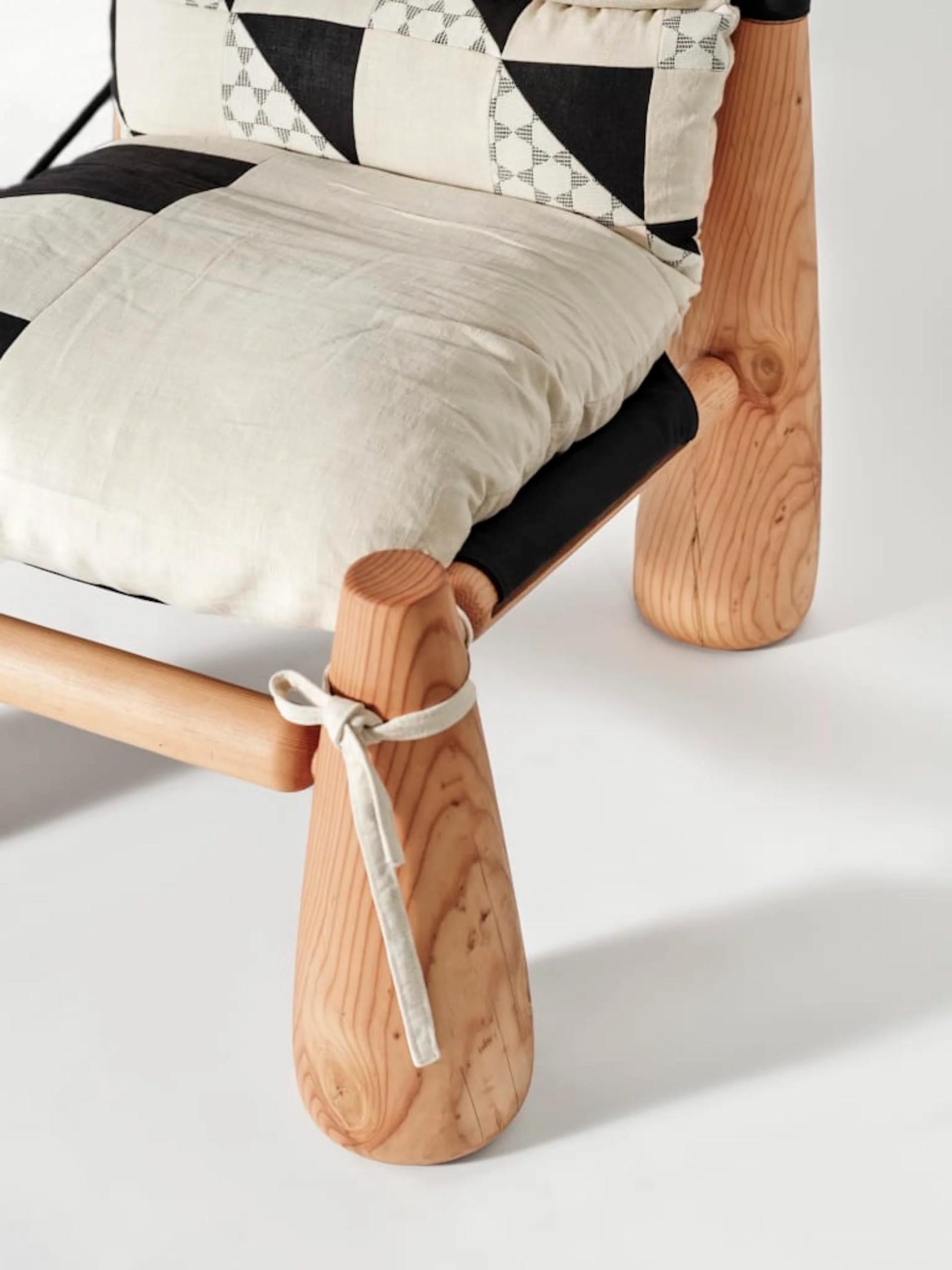ONES TO WATCH FEBRUARY 21 2024
by Design Miami
Three Standout Design Studios Exploring Humankind’s Relationship to the Environment
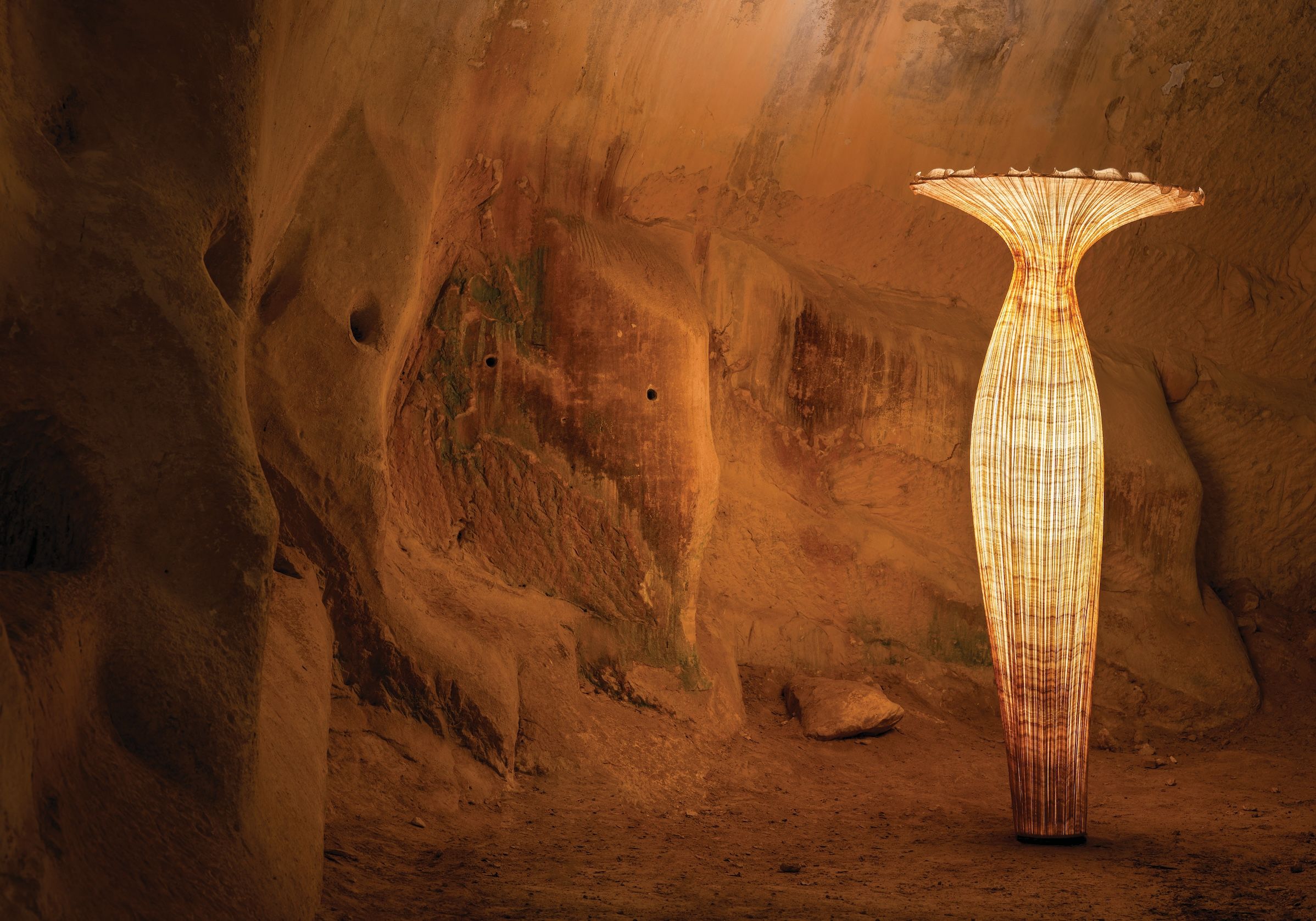
LIMITED EDITION MORNING GLORY BY AQUA CREATIONS
Photo © Aqua Creations
Many of today’s most inspiring creatives embrace design as a tool to celebrate the beauty and genius of the natural world. The three standout studios below—Aqua Creations, Fango, and Anubha Sood—use form, material, and process not only to honor the environment, but also to encourage efforts to protect it.
Scroll on to learn more.

FANGO'S IBUJU COLLECTION, WOVEN FROM YARÉ FIBER
Photos by Juan Silva
Founded by Medellin-born Francisco Jaramillo, Fango design studio has made a big splash on the international design scene of late thanks to thoughtful works inspired by local, sustainable materials that center both Jaramillo’s Colombian heritage and our relationship to the environment.
Working closely with artisans, the rising star designer has begun exploring a variety of natural materials. His debut collectable design collection, entitled Ibuju, is composed of Yaré, a renewable fiber that comes from vines that grow in the Colombian Amazon. The fibers have historically been used by local indigenous communities for weaving. Concerned by indiscriminate logging and overuse of native woods from the jungle, Jaramillo designed Ibuju to explore Yaré’s versatility, drawing on traditional wooden log furniture for formal inspiration. (The project was presented at Design Miami/ 2023 by Side Gallery.)
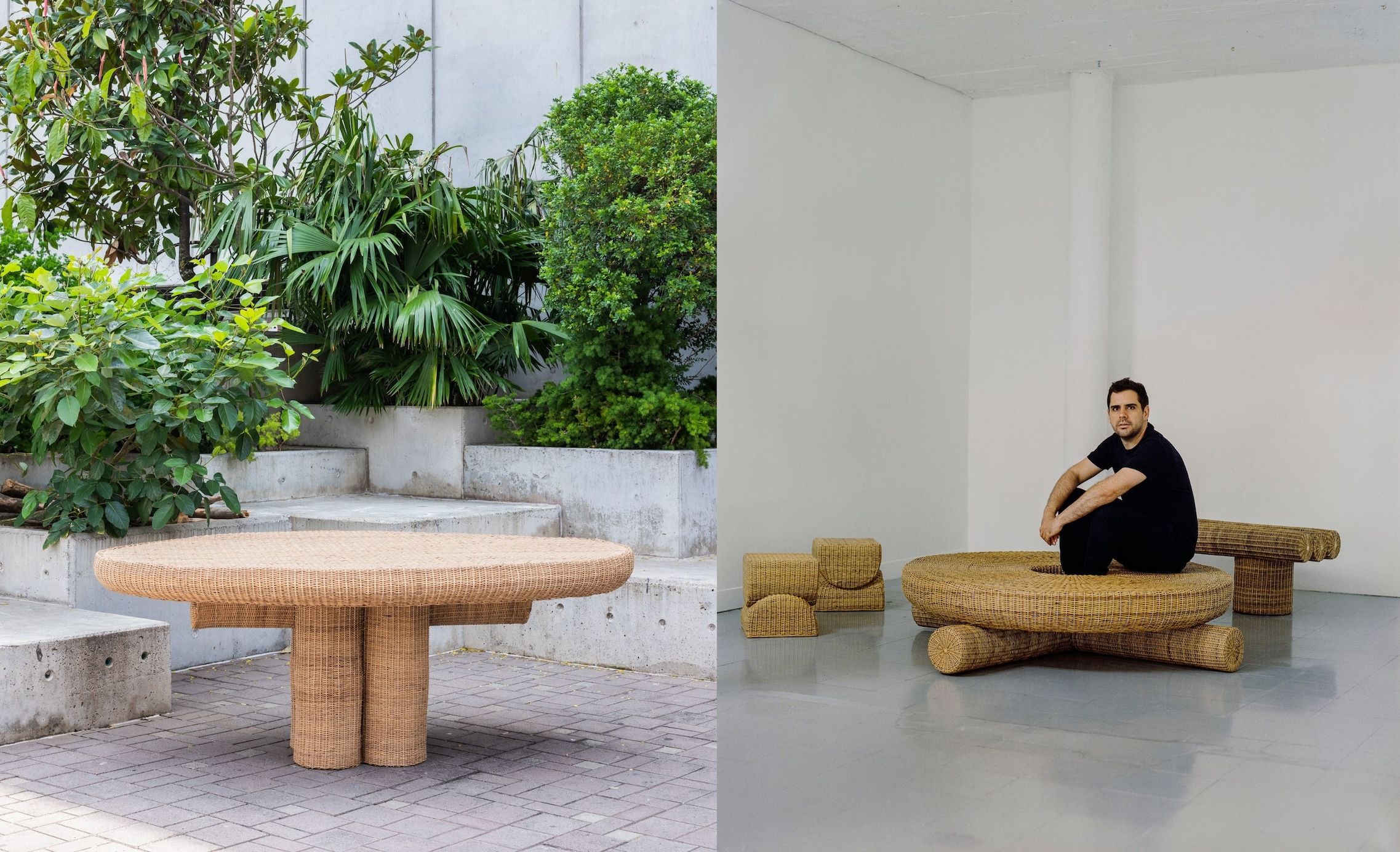
FROM LEFT: IBUJU DINING TABLE AND DESIGNER FRANCISCO JARAMILLO OF FANGO WITH THE IBUJU COLLECTION
Photos by Juan Silva (left) and Juliana Gómez Quijano (right); Courtesy of Fango
“Only Indigenous Amazonian communities are invited to enter into the jungle to harvest these protected vines,” Jaramillo explains. “They’ve passed down information over generations, and they know when the plant is ready to be cut, and the right way to cut it. Why would we blindly cut trees, or use a material like rattan, which we must transport from elsewhere to consume, when we can respectfully use a material that’s already here?”
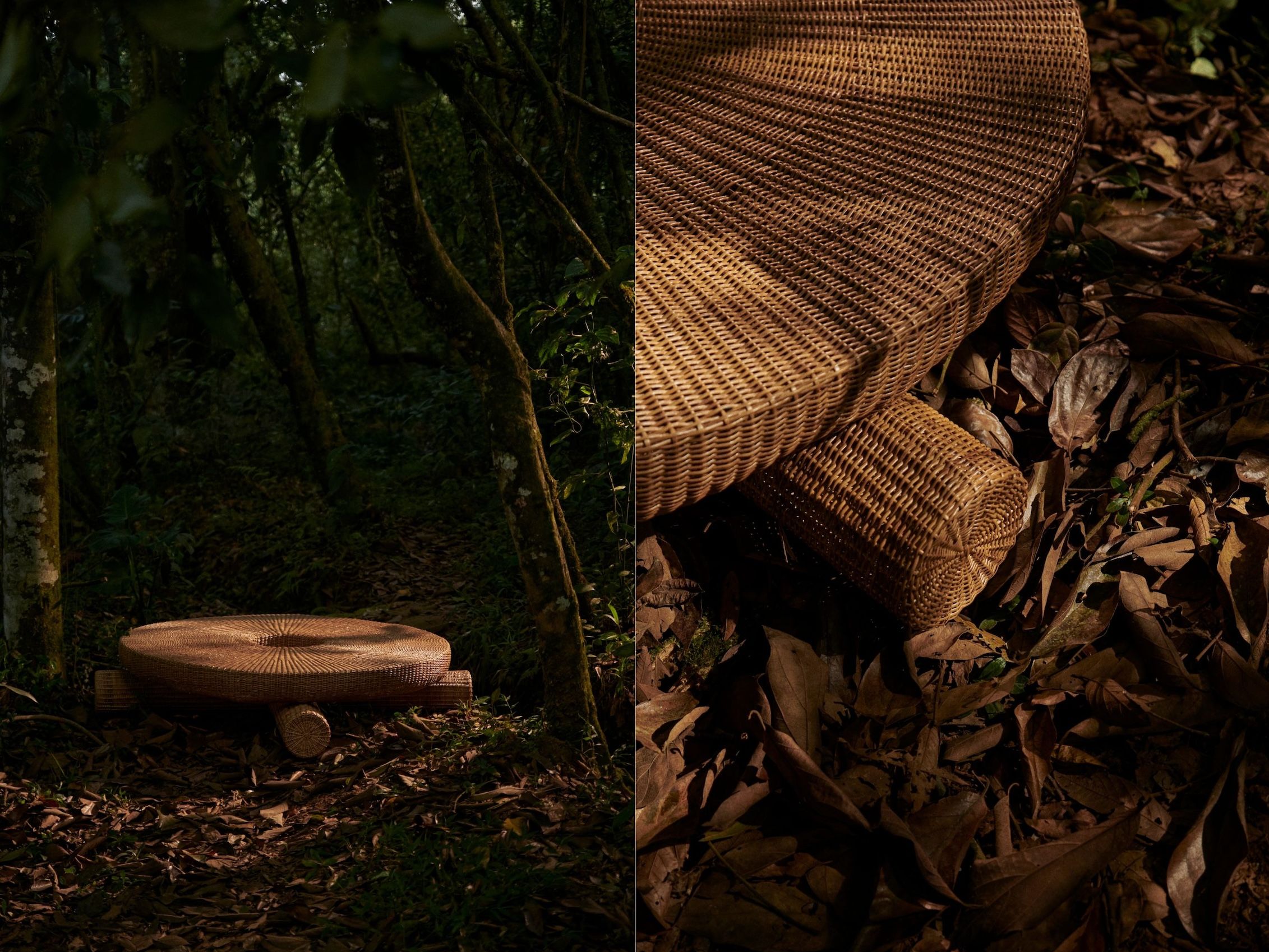
FANGO'S IBUJU COFFEE TABLE
Photos by Departamento de arte; Courtesy of Side Gallery and the designer
In addition to Ibuju, Fango’s Calor collection explores the potential of the fique plant, a member of the Agavaceae family that’s proven useful in combating the spread of wildfires in the region as dry seasons have intensified in recent years. The plant has a high water concentration in its leaves, which creates a natural barrier, thereby halting the progress of fire. The fique fiber is used in the production of coffee bags, carpets, and beyond, and Jamarillo is using the waste from these processes—a residue called oakum—as the primary material for Calor, transforming fique into a mash that covers a variety of volumes.
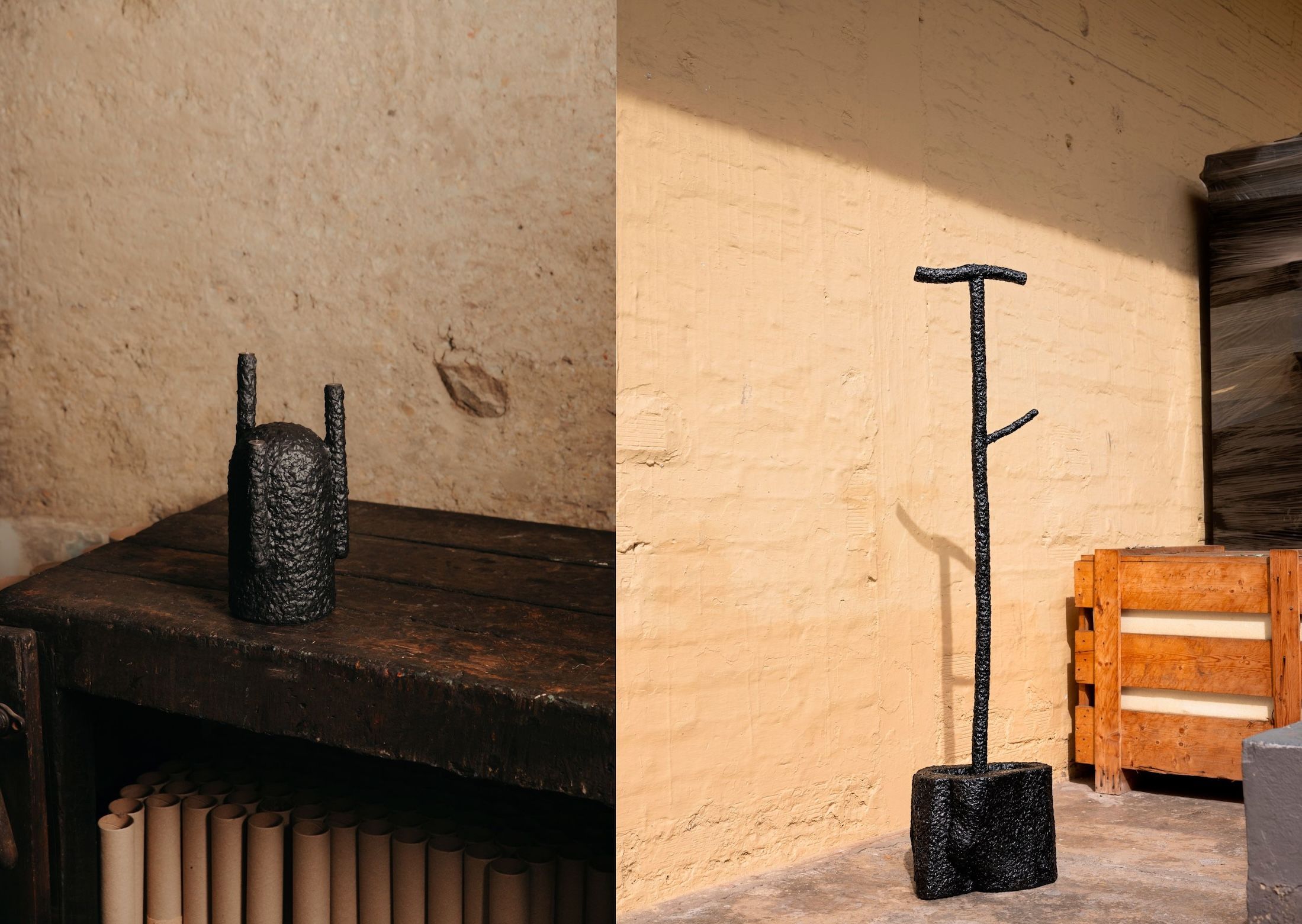
CALOR CANDLEHOLDER AND COAT RACK #2
Photographs by Juan Silva (left) and Juliana Gómez (right); Courtesy of Fango

EXPERT ARTISANS AT WORK ON THE IBUJU COLLECTION
Photos by Juliana Gómez Quijano; Courtesy of Fango
“My grandmother was an artisan weaver. It’s only now as an adult that I fully appreciate all the importance behind her work. It’s amazing. When we collaborate with artisans and the community; we grow and learn together. I see working together with these materials as a way to show the world what is happening in Colombia.”
He goes on: “If we devastate the Amazon, we not only lose the trees, we also hurt everyone and everything around the trees—the larger, surrounding ecosystem—including ourselves. Our environment needs more from us. And we need a new kind of design movement, one that honors fewer, better, more soulful pieces that are responsibly made. Our work needs to speak more about our beloved earth, our human history, and to learn from indigenous knowledge. We can make beautiful designs and be more conscious of the social and environmental impact of our choices.” @fangostudio

AQUA CREATIONS' LOTUS LAKE WAS DESIGNED TO SHINE A LIGHT ON THE VULNERABLE STATE OF THE WORLD’S FRESHWATER LAKES, WHILE POINTING TO A HARMONIOUS PATH FORWARD. THE 17 SILK SHADES WERE INSPIRED BY THE SHAPE OF GREECE’S LAKE DOIRAN
Photo © Aqua Creations
For over three decades, Aqua Creations has consistently looked to the natural world for inspiration for its lighting, objets d’art, and furniture designs. Led by Israeli-born founder and creative director Albi Serfaty, the Englewood, New Jersey-based design studio produces handcrafted pieces that evoke organic forms found both on land and sea—from the silk Morning Glory series, inspired by their namesake flowering plants, to the geometric Zooid lights, inspired by gems and crystals.

FROM LEFT: AQUA CREATIONS' LIMITED EDITION MORNING GLORY FLOOR LAMP AND LAKE DOIRAN WALL LAMPS
Photos courtesy of Aqua Creations
Aqua Creations’ most recent collection, Bodies of Water, debuted at Design Miami/ 2023 and marks a notable shift in the studio’s focus. While still celebrating the grace and ingenuity of nature, the latest lighting collection is a direct response to the climate crisis, and features pieces that formally trace the outlines and details of endangered lakes and seas around the globe that are suffering from overfishing, pollution, resource extraction, and deforestation—simultaneously reflecting on what has been lost and highlighting the need for critical action.

CLOCKWISE FROM LEFT: CREATIVE DIRECTOR ALBI SERFATY AND THE HOLLOW MOBILE CHANDELIER; LAKE CHAD TABLE LAMP; AND LAKE VICTORIA WALL LIGHTS
Photos courtesy of Aqua Creations
As Serfaty tells us: “I hope that those who encounter the Bodies of Water collection will be inspired and in awe of the natural forms and shapes found in this beautiful world we call home. We hope … the collection [raises] awareness [of] the beauty that is being harmed through destructive human patterns on our global bodies of water and a need to advocate for the preservation of our environment.”
Asked how design can serve as a tool to support positive change, he says, “Design often deals with the ethereal beauty of this world. [Yet] it can [also] express statistics and issues with emotion, [encouraging] the viewer to pause and absorb information that they perhaps haven’t [previously] focused on. We hope our work will become a conversation piece, delving into the deeper social and environmental challenges of our day.” / aquagallery.com
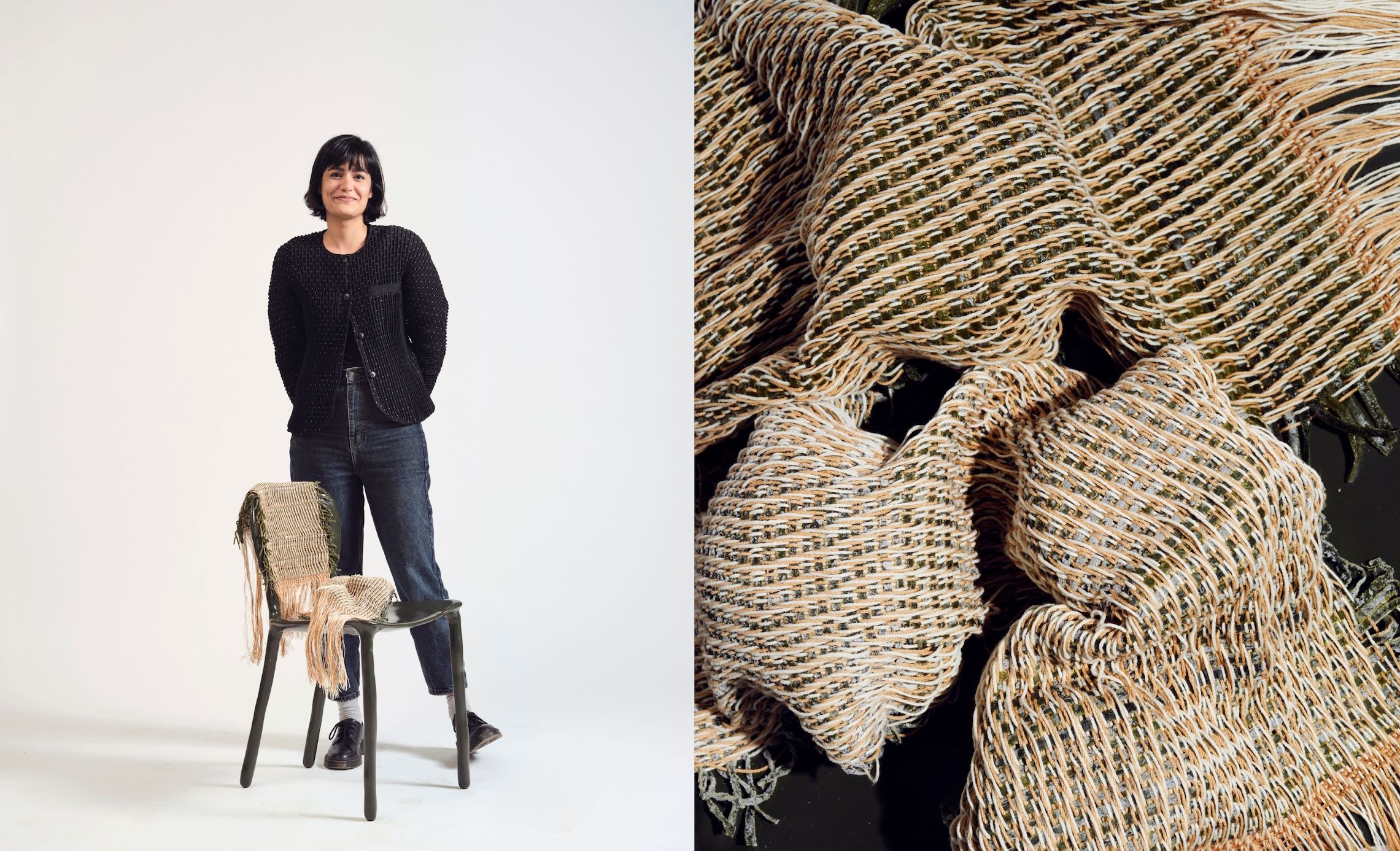
ANUBHA SOOD AND BETWEEN SALT & WATER LIVING STRUCTURE 1
Photos courtesy of Carpenters Workshop Gallery
India-born, New York-based textile artist Anubha Sood’s experimental practice explores a range of bio-materials, from bacteria to seagrasses to her current passion, driftwood. After witnessing the environmental and social toll taken by the textile industry in her native India, Sood’s work critiques current global production systems while envisioning a more equitable, sustainable path forward. In parallel, the emerging talent sees her practice, and the act of making, as a healing process and an opportunity to physically engage with her own environment.
She observes: “Design is crucial in influencing our consumption habits. If we make thoughtful material and production choices in the design room, we can realistically change patterns that we have already identified as problematic.”
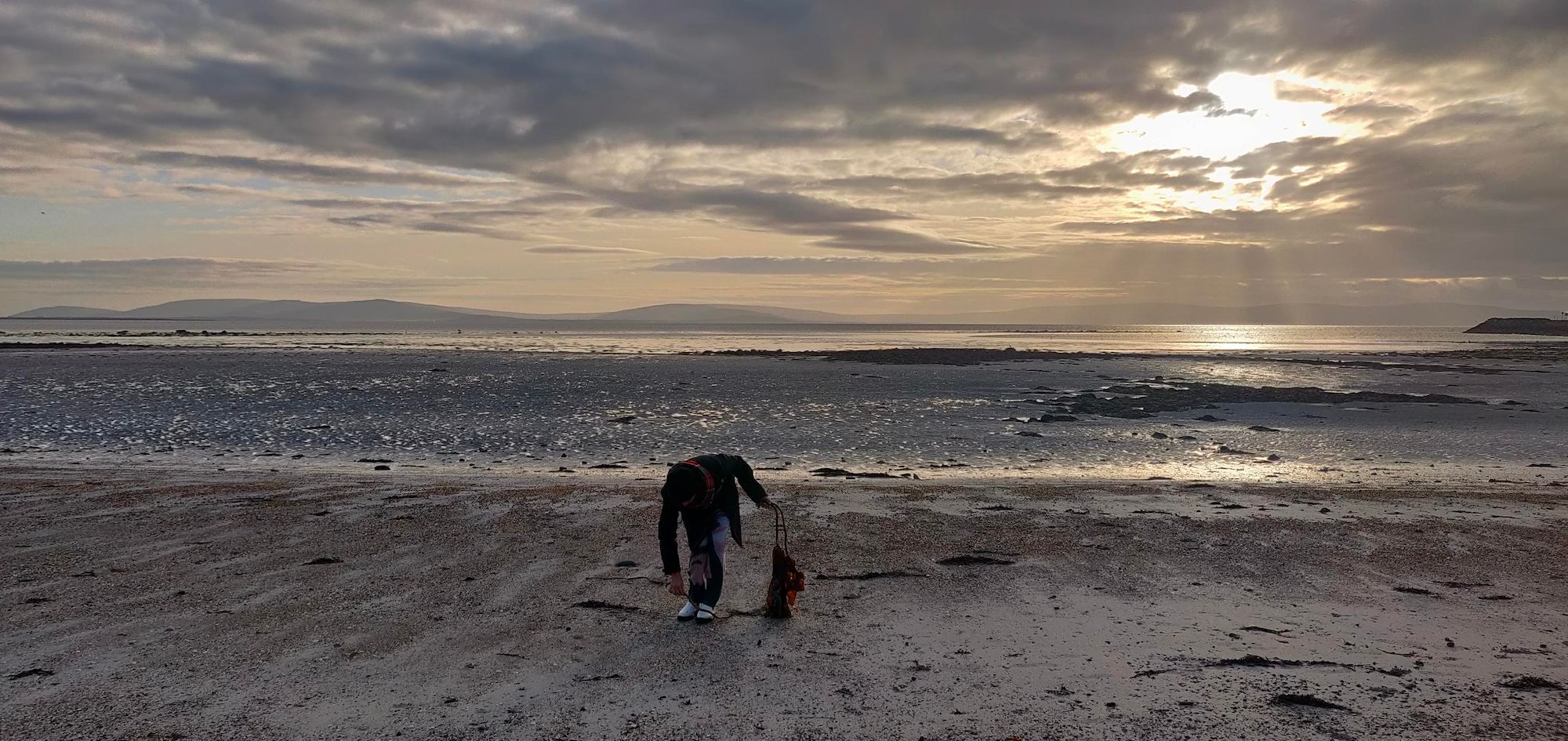
TEXTILE ARTIST ANUBHA SOOD AT THE BEACH
Photo courtesy of the artist

FROM LEFT: SOOD'S WEAVING ON KELP PAPER; DRIFTWOOD TAPESTRY; AND YEAST BACTERIA MATERIAL
Photos courtesy of Anubha Sood
One of Sood’s best-known collections, Between Salt & Water, is woven in kelp, linen, cotton, and rayon yarn, and intended to draw attention to the decline of kelp forests and their role in maintaining Earth’s ecological balance. Given their materiality, the hand-crafted, sculptural objects—which debuted as part of the 2021 Carpenters Workshop Gallery new talent exhibition, Stories from the New World—will evolve over time as the seaweed responds to its environment; when exposed to air, the kelp produces salt crystals on its surface that absorb humidity and prevent it from drying. As Sood explains, “The works, like our own bodies, are in constant flux, responding to the conditions of their immediate environment…[And their] “precarious nature acts as a reminder to attend to our water and land with urgency and care.”
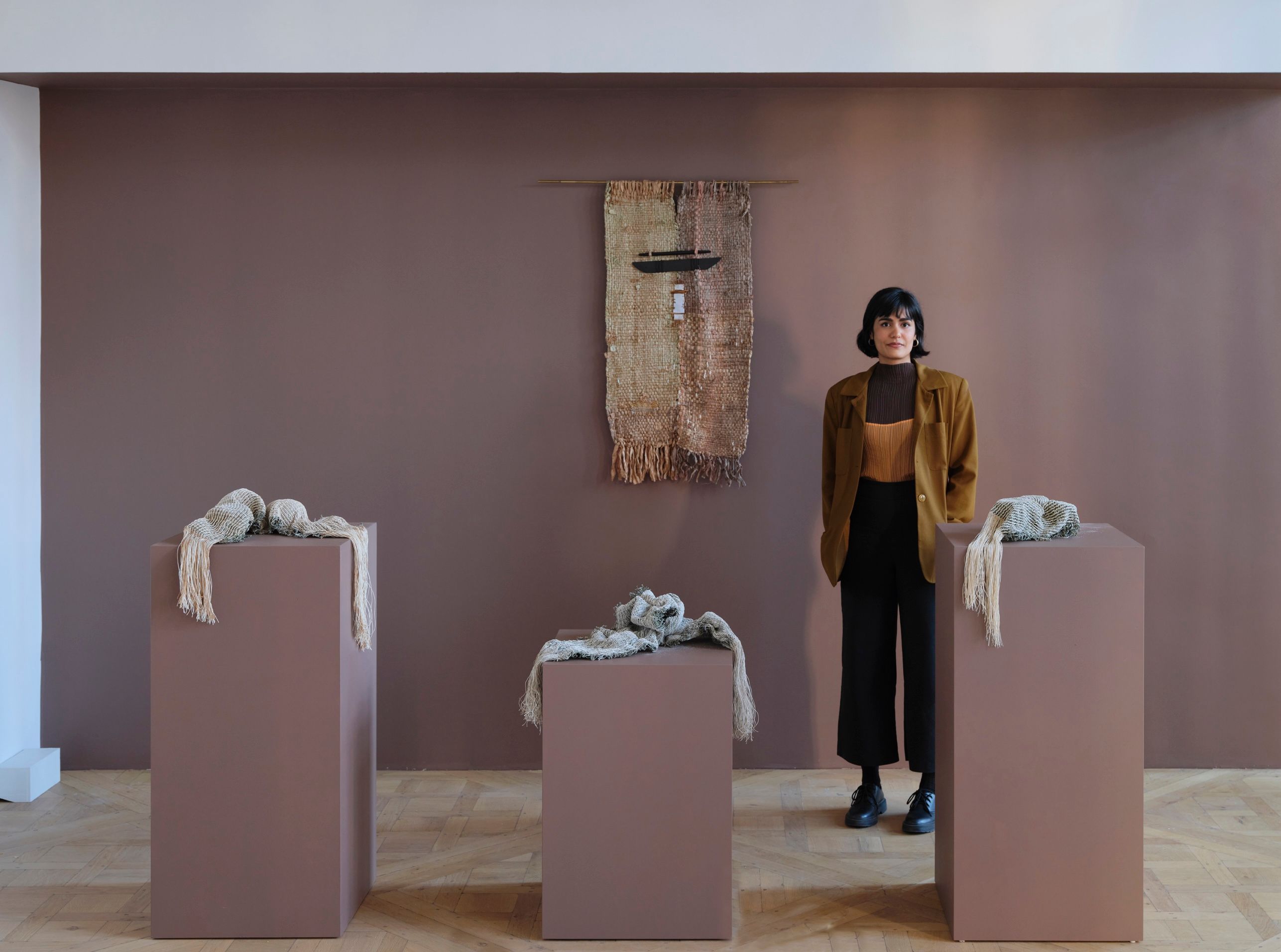
ANUBHA SOOD BEYOND SALT & WATER INSTALLATION AT THE EXHIBITION NEXT GEN: STORIES FROM THE NEW WORLD AT CARPENTERS WORKSHOP GALLERY
Photo by Matt Harrington; Courtesy Carpenters Workshop Gallery

SOOD'S BETWEEN SALT & WATER CRAFTED SCULPTURAL OBJECT MADE FROM KELP
Photo by Matt Harrington; Courtesy Carpenters Workshop Gallery
For her latest driftwood investigations, Sood is collecting pieces from nearby water bodies, and then weaving tapestries upon them. “I love how the sea returns them to shore, carved, finished, and polished,” she says.
Asked what she most hopes people take away from encounters with her work, Sood replies, “A gentler way of engaging with the natural world. I want us to return to exploring natural materials like plant fibers, wood, water, and earth. The entire sensory experience of working with these materials feels intuitive to me. I was an introverted child growing up; I preferred playing with plants more than people. So for me, engaging with natural materials or collaborating with the ocean brings me back to that silence and calmness, and I hope it does the same for others.” / anubhasood.com


